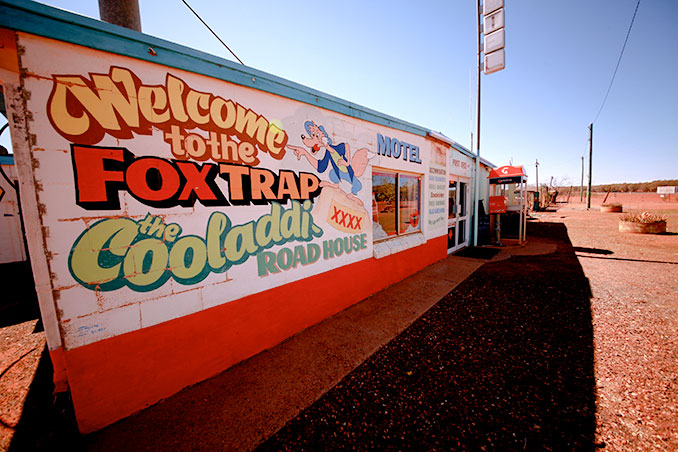Natural Sciences Loop Map
This is an interactive map of the region. Click on a town to learn more
Day 1 – Charleville
Welcome to Charleville and the start of the Natural Sciences Loop. This is a mind-boggling itinerary packed with some of our most intriguing natural science phenomenon. What better place to begin our journey uncovering the mysteries of natural science than the Cosmos Centre? By day you can view the Sun, our most important star, through the Hydrogen Alpha Sun Telescope. Bring your smart phone to capture your own Sun image. On the Night Observatory Tour, the entire roof of the Observatory rolls off to reveal stars, planets and the Milky Way shimmering with incredible clarity against dark night skies.
Stay 2 nights in Charleville

Day 2 – Charleville
Fancy a rain dance? The Vortex Rainmaker guns in the Graham Andrews Parklands have definitely made an impact on the town. Trialled in Charleville in September 1902, the six guns were fired at two-minute intervals. It was hoped that the vibration caused by the discharge of gas in the clouds would cause rain. Sadly no. But it’s an interesting story. If you are keen to learn more about our weather patterns, you might visit the Charleville Bureau of Meteorology and watch the release of a weather balloon. Find out why you should join the Easter ‘bilbies not bunnies’ campaign on a visit to the Bilby Experience. The work carried out by volunteers to save the Bilby from extinction is nothing short of inspirational. Be prepared to be impressed on a guided tour of the facility with an experienced Bilby Keeper.
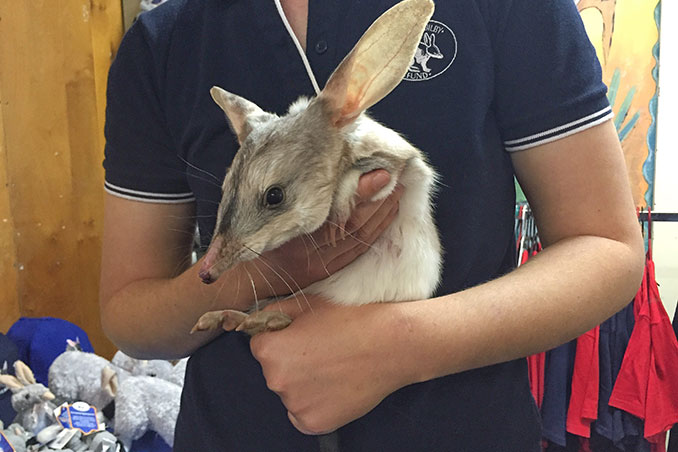
Day 3 – Charleville to Cunnamulla (approx. 200km / 2hr 6min)
If you would like to know more about the world’s largest underground river, then Cunnamulla is a good place to start. The Great Artesian Basin covers one fifth of Australia and is the life blood of our rural communities. A novel way to learn the story is at The Artesian Time Tunnel in the Cunnamulla Visitor Information Centre. Step inside the simulated old mine lift and hit the button and you’ll literally feel the earth shake as you travel back in time – some 100 million years. Discover the link between the Artesian Basin, Australia’s largest dinosaurs and the Eromanga Inland Sea. It’s a good story! Continuing the water theme put on your walking shoes and follow the 2.5km River Walk at sunset to capture the last colours of the day from the viewing deck. Alternatively, you may like to hire a kayak to tour this natural wonderland. Overnight Cunnamulla
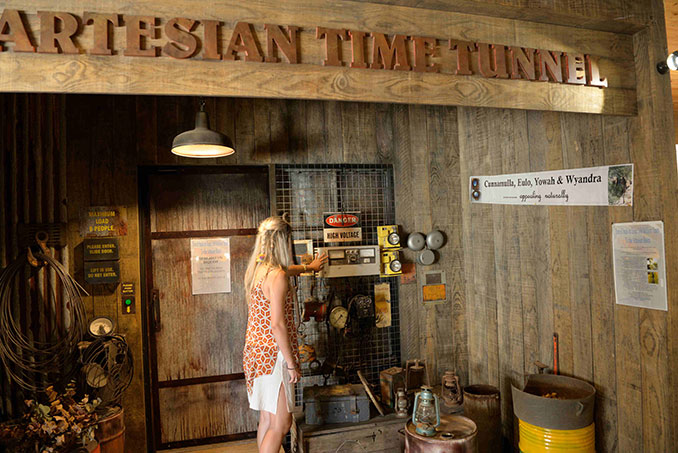
Day 4 – Cunnamulla to Thargomindah (approx. 197km / 2hr 5min)
The Artesian water story turns a bit muddier a further 68 kilometres west in Eulo. Enormous underground pressure from the Great Artesian Basin has forced century old mud through fissures in the ground resulting in Eulo’s Artesian Mud Springs. An enterprising local has turned this ancient mud into a modern-day beauty therapy at the Eulo Artesian Mud Baths. Speaking of the earth’s gems, do you like opals? Spend time exploring Yowah’s ‘living gallery’ with its distinctive opal galleries dotted around town. The main attraction for this area is the unique Yowah Nut. If you’re feeling lucky, try your hand at fossicking while in town then continue your drive to Thargomindah.
‘Thargo’ as the locals call it, was the first town in Australia, and third in the world, to produce hydro-electric power for street lighting. A ‘smart cookie’ came up with the idea to use the water pressure from the Artesian Basin. You can discover the story for yourself courtesy of a self-tour Code Card from the Visitor Information Centre. This nifty card will give you access to the Hydro Power Plant, Old Hospital and Leahy House. Once inside the attractions, use the card to activate some really interesting videos and life-like holograms – you really feel as though you are part of the story. Overnight Thargomindah
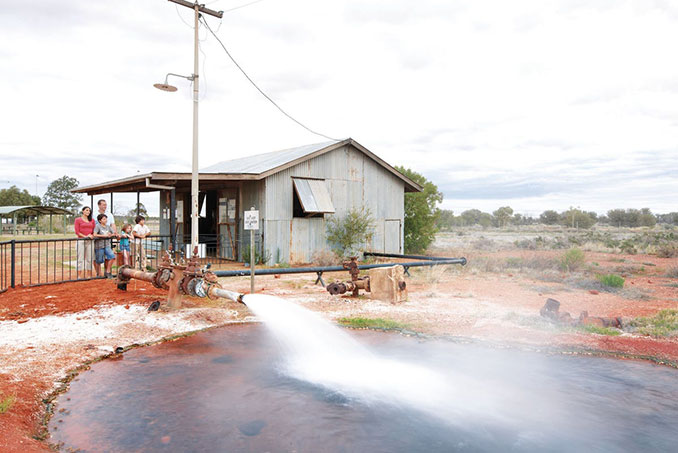
Day 5 – Thargomindah to Eromanga (approx. 280km / 3hr 6min)
Today you’ll travel to Eromanga, reputedly Australia’s furthest town from the sea. It’s located on the edge of the ancient Eromanga Inland Sea. The Eromanga Basin has been explored and developed for petroleum production with the area producing an astonishing 1.5 million barrels of oil each year. Another ancient discovery in Eromanga is dinosaurs. See skeletal remains from one of the largest animals to have walked the earth at the Eromanga Natural History Museum. Picture a large plant-eating sauropod dinosaur, 30 metres long and 6.5 metres high and you’re getting the idea. On the guided Australian Dinosaur Giants tour you can touch a 95 million year old dinosaur bone, watch fossil preparation in action and see the incredible Eulo megafauna fossils. There’s also a number of scheduled dinosaur and megafauna digs open to visitors at selected times throughout the year. Overnight Eromanga
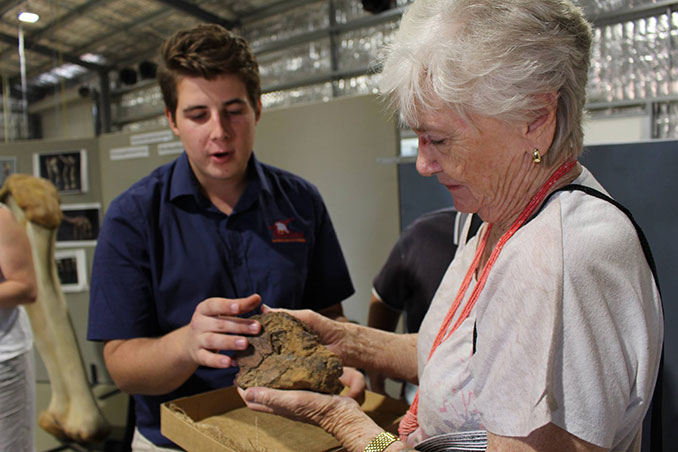
Day 6 – Eromanga to Quilpie (approx. 106km / 1hr 16min)
Travel east along the fully sealed Cooper Developmental Road to Quilpie. On arrival, make your first stop the Visitor Information Centre, Museum and Gallery. Quilpie is home to the exquisite boulder opal. While in town you can try your luck in the free opal fossicking area and see the stunning Opal Altar at St Finbarr’s Church. Quench your thirst and enjoy a great pub meal at the Quilpie Heritage Inn. Late this afternoon, drive about 7.4km from Quilpie to take in a spectacular sunset from Baldy Top, a magnificent boulder formation, millions of years old. The relatively easy ten-minute climb to the top will reward you with breathtaking panoramic vistas, the perfect sunset photo stop. Overnight Quilpie
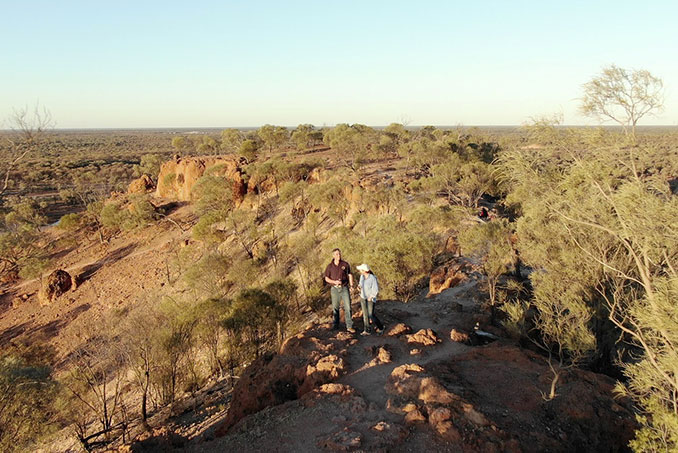
Day 7 – Quilpie to Charleville (approx. 211km / 2hr 50min)
Today you’ll visit one of the smallest towns in Australia to retain its own postcode. Cooladdi, taking its name from an Aboriginal term for ‘black duck’, was once home to 270 residents. Now only four remain. Call in to the only business in town, the Fox Trap, a pub, post office, restaurant and motel rolled into one. Continue east along State Route 14 to Charleville. Your Natural Sciences Loop concludes here today.
